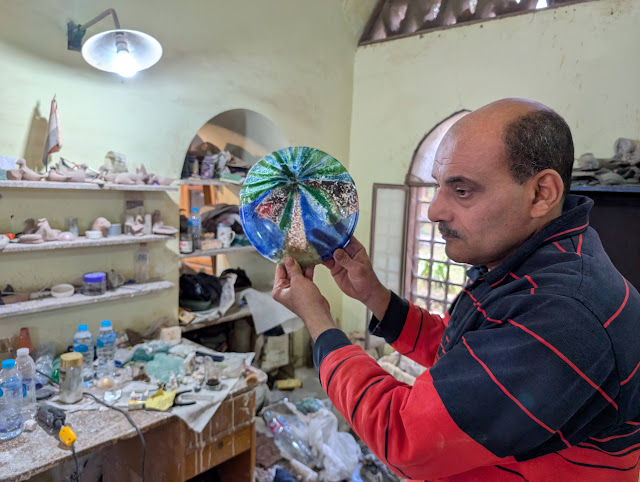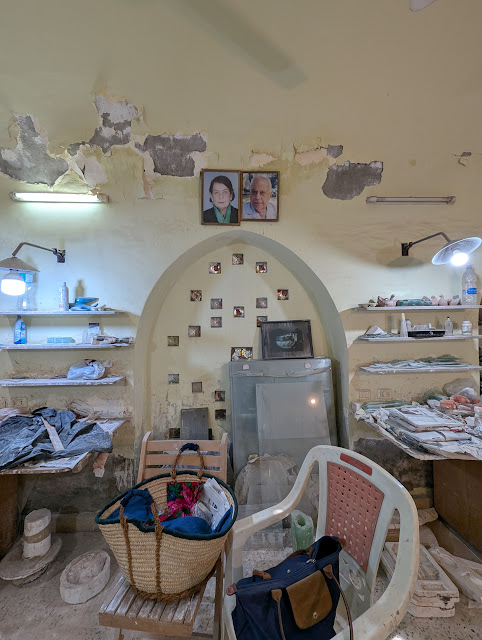Today, before heading to the Wissa Wassef Center, we made a stop at the Glass Museum in Cairo, where we were warmly welcomed by Hatem. Trained in glassmaking and pottery since the age of six under the guidance of the late Dr. Aida Abdel Kerim, Hatem carries a deep knowledge of traditional techniques—ones that deeply overlap with our ongoing research on Egyptian Blue.
As we walked through the museum, Hatem spoke about the rich history of blue and turquoise in ceramics, particularly in porcelain. He described the mesmerizing process of creating these colors, which involves copper, salt, and borax (or "Flax," as he called it). The reaction between these materials produces vibrant blues, with impurities in the mix creating unexpected effects—bubbles, variations, and a depth that cannot be entirely controlled.
One of the key takeaways from our conversation was the importance of glazing or lining pottery to ensure that these colors survive the intense heat of firing. Dina brings up the use of Natron from Wadi el Natron, which Hatem confirms is ideal due to its high sugar and lead content, both essential in the melting process. Hatem adds that modern tools—like computer-controlled ovens—allow for precise temperature control, though experimentation remains essential. Hatem spoke of learning through trial and error, refining techniques, and embracing the mistakes that lead to discoveries.
In many ways, his insights echo our own approach to making Egyptian Blue. The blend of tradition and experimentation, of chemistry and chance, continues to shape our understanding of this ancient pigment. This encounter at the Glass Museum added another layer to our research, reminding us that history is often preserved not just in artifacts, but in the hands and knowledge of artisans like Hatem.






